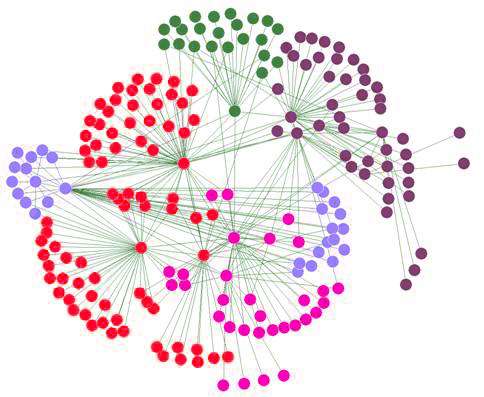Walking and talking behaviors may help predict epidemics and trends

Mobile phone data may reveal an underlying mathematical connection between how we move and how we communicate that could make it easier to predict how diseases—and even ideas—spread through a population, according to an international team of researchers.
"This study really deepens our quantitative understanding of human behavior," said Dashun Wang, assistant professor of information sciences and technology, Penn State. "We would like to think that we control our own behavior and we can do what we want to do. But, what we are starting to see with big data is that there is a very deep regularity underlying much of what we do."
In a study, location and communication data collected from three international mobile phone carriers showed that people move and communicate in predictable patterns, said Wang.
He added that because movement and communication are connected, researchers may only need one type of data to make predictions about the other phenomenon. For instance, communication data could reveal information about how people move.
"In a lot of cases, we don't have both sides of the information," said Wang. "We might only have information about social connections, or maybe we only have information about mobility. What this mathematical equation allows us to do is to derive one from the other."
The equation could better forecast, among other things, how a virus might spread, according to the researchers, who report their findings today (June 6, 2016) in the Proceedings of the National Academy of Sciences. In the study, they tested the equation on a simulated epidemic and found that either location or communication datasets could be used to reliably predict the movement of the disease.
"One application we showed is if we know who communicates with whom in a country, we would be able to estimate how a virus would spread within that country," said Wang. "In order for us to know how a virus spreads, traditionally we would need to know how people move around, but now we don't need to know that. If a virus, like the Zika virus, entered Dallas, let's say, we show that we would not only know how it would spread across the United States, but our estimations would be far more accurate than those achieved with methods that we have been using earlier."
He added that researchers could also use this data to predict how ideas and trends sweep through a culture.
Wang said this phenomenon is based on mathematical rules, often referred to as a power law distribution. This law describes the regularity of certain behaviors, but recognizes that there is always a small chance for an occasional large aberration.
"For example, most of the time, people move only very, very short distances, just to places around town," said Wang. "But, occasionally, you'll take a long jump. You take a trip to New York City, and then, when you're there, you might take a few more short jumps before you go back home."
The researchers analyzed data from three different databases with messages from 1.3 million users in Portugal and 6 million users in an unnamed European country. They also collected four years of data from a large mobile phone carrier in Rwanda.
The datasets included information on who makes calls or sends text messages with whom and where, according to Wang.
More information: Scaling identity connects human mobility and social interactions, PNAS, www.pnas.org/cgi/doi/10.1073/pnas.1525443113
Journal information: Proceedings of the National Academy of Sciences
Provided by Pennsylvania State University




















